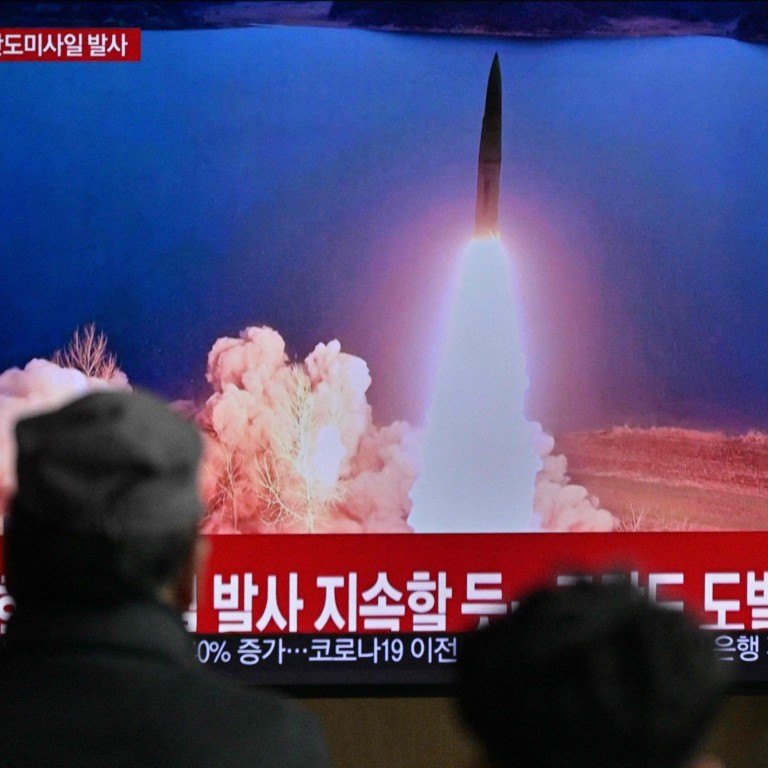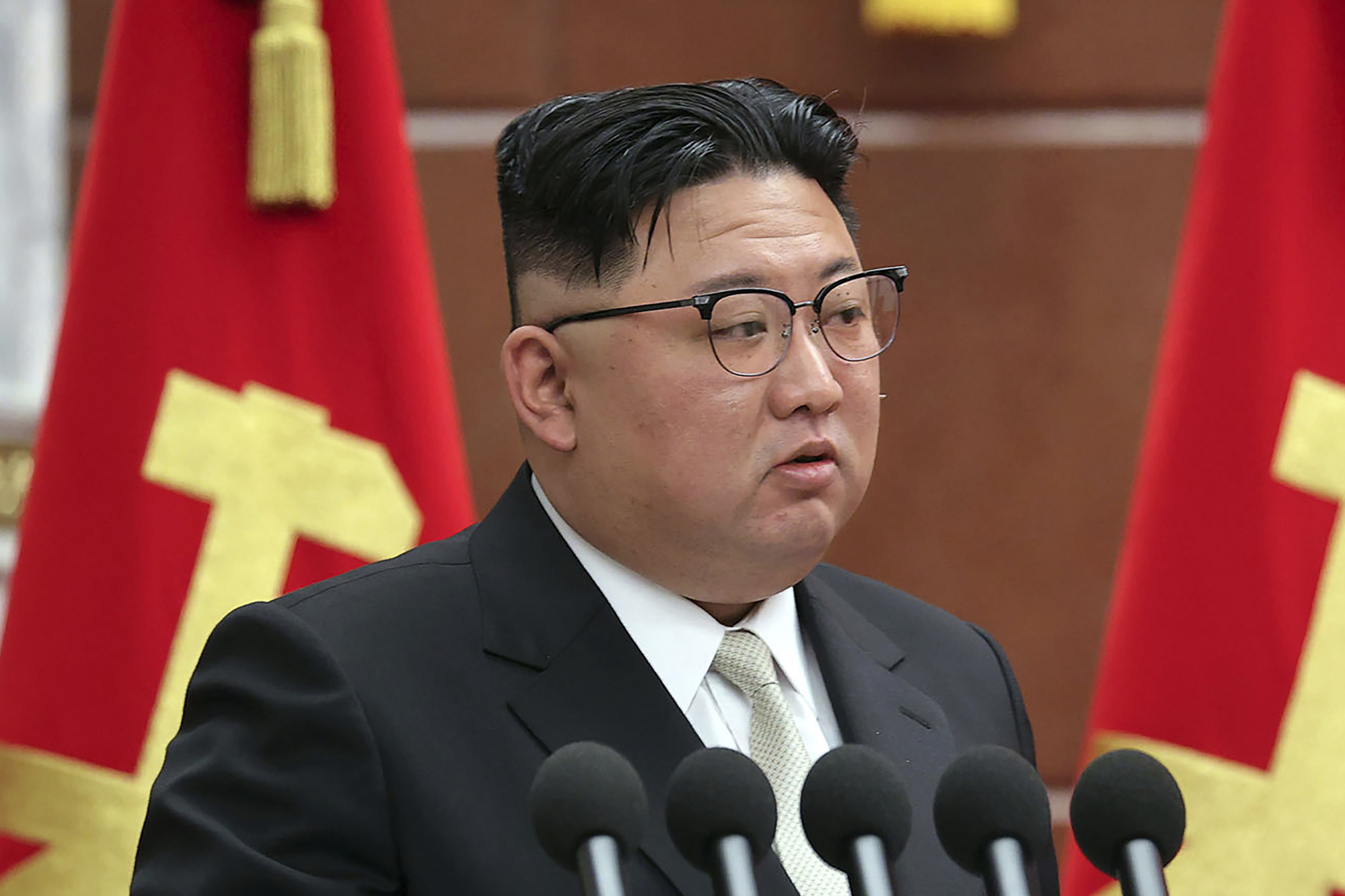
North Korea fires another missile, adding to barrage of launches
- Missile fired on Sunday, with South Korea and United States in the middle of 11-day joint military drills
- Seoul, Washington, Tokyo discuss latest provocation; G7 nations say they regret inaction, ‘obstruction’ by some UN Security Council members over tests
North Korea fired a short-range ballistic missile on Sunday, Seoul’s military said, the fourth show of force in a week as South Korea and the United States stage major military drills.
Seoul and Washington have ramped up defence cooperation in the face of growing military and nuclear threats from the North, which has conducted a series of increasingly provocative banned weapons tests in recent months.
South Korea and the United States are in the middle of 11 days of joint drills known as Freedom Shield, their largest in five years.
North Korea views all such exercises as rehearsals for invasion and has repeatedly warned it would take “overwhelming” action in response.
“Our military detected one short-range ballistic missile fired from around the Tongchang-ri area in North Pyongan province at 11:05am (0205 GMT) towards the East Sea,” South Korea’s Joint Chiefs of Staff (JCS) said, referring to the body of water also known as the Sea of Japan.
Meanwhile, foreign ministers of the Group of Seven (G7) nations said on Sunday they regret inaction by the UN Security Council over North Korea’s missile tests.
In a statement, they noted “obstruction” by some members of the UNSC. Although the group did not name them, China and Russia have blocked recent attempts to do more in response to North Korea.
The G7 condemned the North’s March 16 launch of an intercontinental ballistic missile (ICBM) as “undermining regional and international peace and security”.
Pyongyang’s test on Sunday adds to its barrage of launches in the past month that included two rockets designed to deliver a nuclear warhead to the US mainland.
The latest missile flew for about 800km before falling into the sea outside Japan’s exclusive economic zone, Japan’s Vice Defence Minister Toshiro Ino said. It may have flown on an irregular trajectory and a detailed analysis is underway, Ino added.
Kim Gunn, South Korea’s Special Representative for Korean peninsula Peace and Security Affairs, held a conference call with his US and Japan counterparts Sung Kim and Takehiro Funakoshi to discuss the latest North Korean provocation.
The three officials condemned the North, calling its actions a threat to peace and stability that clearly violates UN Security Council resolutions, South Korea’s foreign ministry said in a statement.
The US and South Korea conducted a joint drill over the Korean peninsula involving a B-1B bomber and fighter jets on Sunday, South Korea’s defence ministry said, part of Freedom Shield, taking place from March 13 to March 23.
Kim Jong-un’s regime last week fired what it said was a Hwasong-17 ICBM hours before South Korean President Yoon Suk Yeol went to Japan for a summit to repair ties and improve security cooperation.
Kim said that launch was meant to “strike fear into the enemies” of North Korea as the joint military exercise were being stepped up.
North Korea had already shot 12 ballistic missiles since February 18 that included two ICBMs and what appeared to be a new close-range ballistic missile designed to hit US bases in South Korea. The tests also included two cruise missiles fired from a submarine, which appeared to be another first.

Japan’s Ino said the actions by North Korea “threaten the security of Japan and international community, and they are absolutely unacceptable”, while the US Indo-Pacific Command said the missile launch does not pose an immediate threat.
Kim Yo-jong, the influential sister of the leader, has warned Pyongyang would turn the Pacific into a “firing range” if the US continued drills. She also hinted the state could start testing whether its warhead designs can withstand the heat of re-entering the atmosphere.
North Korea has demonstrated its missiles could fly as far as the US mainland but there are questions as to whether the warheads would be able to stay intact to reach their targets.
North Korea put on its biggest display of ICBMs during a military parade in Pyongyang in February. Kim oversaw the event, with his preteen daughter on hand to watch from a seat of honour. Her attendance signalled there is another generation ready to take over the Cold War’s last continuous family dynasty.
Last year, North Korea fired more than 70 ballistic missiles, the most during Kim’s decade in power, as it modernises its arsenal and increases its ability to deliver a nuclear strike against the US and its allies. Kim could even ratchet up tensions higher with his first nuclear test since 2017.

The North Korean leader pledged to exponentially increase his atomic arsenal in the new year to stifle what he called US and South Korean hostile acts, in a policy-setting address released on January 1 where he left almost no opening for a return to long-stalled disarmament talks.
The US and South Korea in late January pledged to step up the scope of their joint exercises at a meeting of their defence ministers in Seoul. The drills had been scaled down or halted under former President Donald Trump, who was hoping the move would facilitate his nuclear negotiations with the North Korean leader.
Those talks, however, produced no concrete steps to wind down Pyongyang’s nuclear programme, which has only grown larger as disarmament talks sputtered. In recent months, Japan has joined in some of the drills that have included the US and South Korea, a move that angered Pyongyang, which has responded with shows of force to signal its displeasure.
Additional reporting by Agence France-Presse, Reuters

